There are around 20,000 plants in the world that yield some edible part and contribute towards human food. But out of these, only 3,000 plants are exploited by humans for food and only 150 plants are being cultivated on commercial scale. The rest are still to be domesticated and brought under cultivation. Ninety-five per cent food consumed by humans comes from 20 plants only. This indicates the extent of under-utilization of available plant resources.
However, WFPs are key components in the everyday diets of rural households and meet between 12% and 24.4% of the food requirements of local indigenous communities. These food items are rich in macronutrients and full of energy contents. So, there exists an enormous scope for diversification, domestication and utilization of this plant wealth for rural prosperity and entrepreneurship development.
The utilization of wild food plants offers many advantages over commercial food plants – they add to the limited variety of fruits or food available from commercial sources; offer a free source of nutrients and minerals; are relatively hardier, more resistant to diseases, insect and pests; free from the use of harmful chemical fertilizers, insecticides and pesticides and in most cases, the species are multipurpose type. So, these offer many other uses except food.
Wild food Plants (WFPs) are hardy species and survive on degraded lands and even during extreme weather variabilities like droughts and floods. WFPs can be the local solutions to global issues like climate change and food and nutrition security. Sustainable development goals 1, 2, and 3 are significant for a poverty-free, hunger-free world and ensure good health and wellbeing of the people, respectively. The three goals are important and interlinked as achieving zero poverty will help reduce hunger among the people. Availability of nutritional and balanced food ensures good health.
Also read – Regenerative Agriculture In An Era Of Climate Change
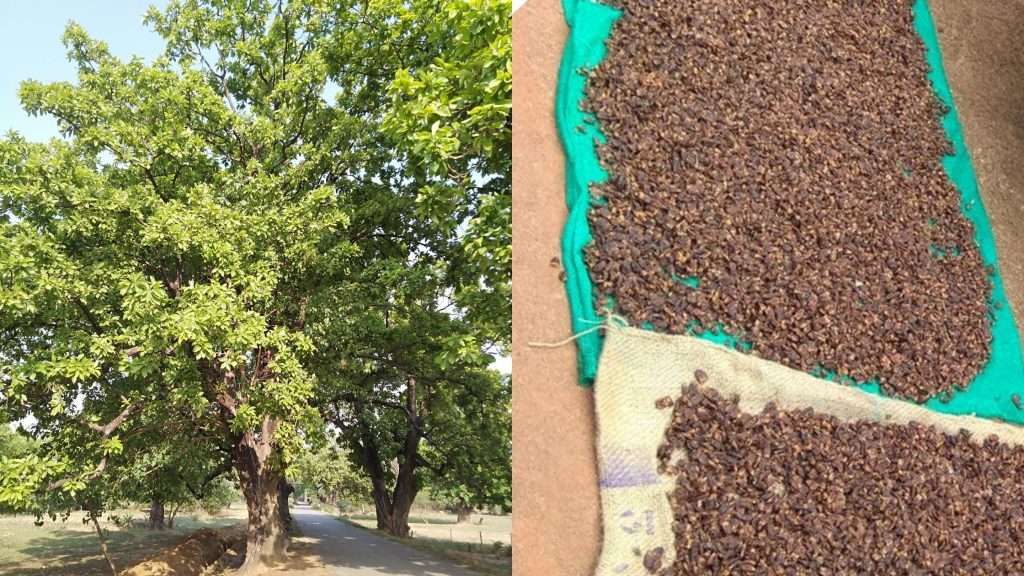
Wild food plants are an essential part of a nourishing and healthy diet for indigenous communities. They are globally collected from natural habitats or cultivated at more minor scales. Although consumed locally, they are an essential part of the diets of tribal and indigenous communities worldwide and hold immense potential to alleviate global hunger. Considering their importance for global sustainable food security, it is essential to clearly understand the future role of wild food plants for future readiness and resilient agriculture.
Indigenous communities (Scheduled Tribes) consume Wild Food Plants (WFPs) as part of their daily diets. They collect these from the forest or sometimes grow these WFPs in their farmlands. Wild Food Plants (WFPs) including tubers, vegetables, flowers, fruits, mushrooms, gums and resins, greens and berries have been used traditionally by indigenous communities in their daily diets and play an important role in ensuring the health, household level food and nutrition security, especially of women and children.
There are many instances where forest communities have survived primarily on WFPs during drought years and food scarce months by consuming wild tubers and mango kernel, more out of distress and extreme poverty in Odisha.
Also read – Palua (Arrowroot) – A Wild Edible Tuber In Tribal Hinterlands
Practice of digging up roots and tubers and gathering fruit and nuts from wild are almost universal, particularly during hunger periods. Studies on such practices in various parts of the world show collection of wild food plants is no more an affair of the poor, and wild food is not just an uncivilized food.
There are at least 3000 edible plant species known to various human societies since long past, but most of them remain neglected or under-utilized. WFPs like leafy greens, roots and tubers, fruits and seeds and mushrooms offer a range of vitamins and minerals, add flavor and diversity to the grain‐dominated human diets and further contribute to the household income and health security of the poor in the world.
Participatory field study findings
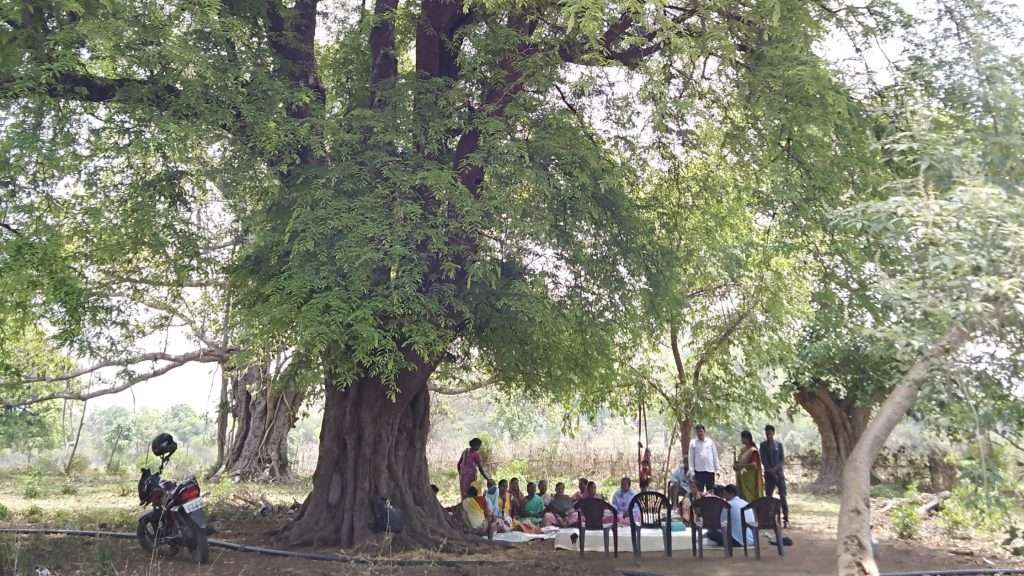
In an era of climate change, where communities all over the world experience increasing and extreme weather variabilities, the availability of WFPs shows a decreasing trend during the last two decades. This has a ripple effect on the food consumption pattern, incomes and livelihood opportunities for most forest communities.
Forest communities are increasingly finding it difficult to gather wild foods to supplement their diet.
As per a participatory field study using historical transects, resource mapping, crop calendars, trends in production and consumption of crops facilitated with local communities in Western Odisha, it was found that –
- The consumption of diverse varieties of wild food plants like yams, greens, lentils, minor millets and tubers has reduced considerably over the last two decades.
- About 23-25 varieties of wild foods, including minor millets, greens, lentils, mushrooms, wild fish, vegetables, fruits and berries, present on the plates of rural communities a few decades ago has now been reduced to only 5-7 quintessential types.
- Rural communities have now shifted to consuming rice, a few lentils and vegetables, a growing trend that apes the food habits of the middle class and urban communities and largely dependent on external procurement rather than local production.
The major factors contributing towards this scenario include rapid loss of forests and biodiversity in the garb of development such as infrastructure development, mining, construction of dams and other development projects. The other factors include extreme weather variabilities like increased frequency of droughts, high intensity short duration rainfall, frost, prolonged dry periods, etc.
Added to this, the situation is aggravated by accelerated soil erosion and the invasion of monoculture of crops and commercial plantations at individual levels, especially eucalyptus plantations for paper pulp and other export-oriented commodities, based purely on profit.
Indigenous communities sometimes panic in distress and this leads to panic harvesting of WFPs which may result in complete loss of the species from an area. The problem is amplified with the migration of men folk in search of jobs during lean seasons when the family is forced to survive on basic rations from government sources. In spite of all these issues facing the forest communities, the Government still does not have a policy to declare drought if the NTFPs/WFP production decreases even below 50% of a normal year.
WFPs like Bamboo shoots, Bahunia variegata, Sesbania sesban, Roselle (Gongura – Corchorus sp.), Sweet Potato (Ipomoea sp.), Fiddle head ferns, Colocasia, Elephant Yam, East Indian arrowroot (Curcuma augustifolia) and greens like Amaranthus, Poi saag (Basella rubra), Drumstick (Moringa oleifera), Ber (Zizhyphus sp.), Date Palm etc., that were consumed by local communities have been replaced with monocrops like Rice, Potatoes, a few vegetables, sugarcane and other commercial crops like cotton, which are now procured from far off localities. Environmentally the practice of procurement also leads to increased food mile.
India’s position on malnutrition and WFPs
India’s Global Hunger Index ranking of 107 among the 119 nations in 2022, with the worst hunger situation places it even Bangladesh, Pakistan and Nepal. India needs a lot more to be done to tackle the menace of malnutrition and WFPs are a possible interventions to address the issues of chronic hunger and malnourishment, especially of women and children in tribal areas and hunger pockets.
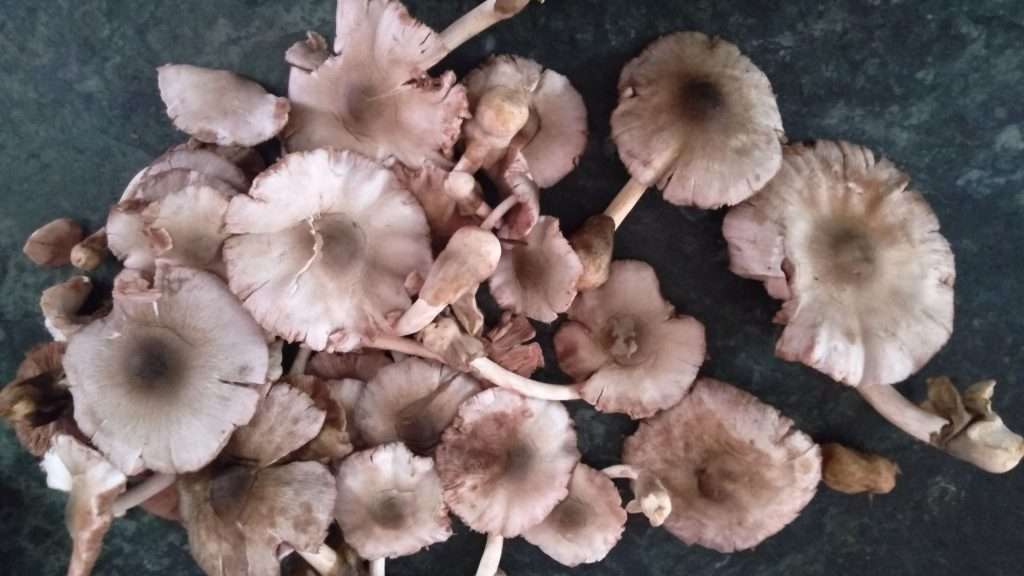
Addressing issues of endemic anaemia, under nourishment and malnourishment, continues to be a challenge in most drought-prone and forested pockets, which more often than not fall under the hunger pockets in India. The rate of anaemia is as high as 50% of women in India with child under nutrition and malnutrition levels being high. World Bank data indicates that India has one of the world’s highest demographics of children suffering from malnutrition.
Some of the WFPs like Mahua (Madhuca indica) have potential to address the food and nutritional needs of women and children. Mahua flowers are soaked in water overnight and consumed by tribal children as breakfast in most tribal areas. This is a rich source of carbohydrates and iron and addresses most of the nutritional requirements of children and women.
Fruits like mangoes, gooseberries, Wood apple, Ber, Jamun, Custard apple and wild berries like Mulberry are important sources of food and nutrition being rich sources of micro and macro nutrients like Iron, Calcium, magnesium, zinc, manganese and molybdenum. Their exclusion from the food platter is a factor affecting the nutrition status of women and children. Tubers like Yams and fruits like Jackfruits and mangoes are available in plenty in tribal areas. These have high minerals, vitamins and anti-oxidant content that is vital for regions grappling with malnutrition and anaemia.
Women contribution
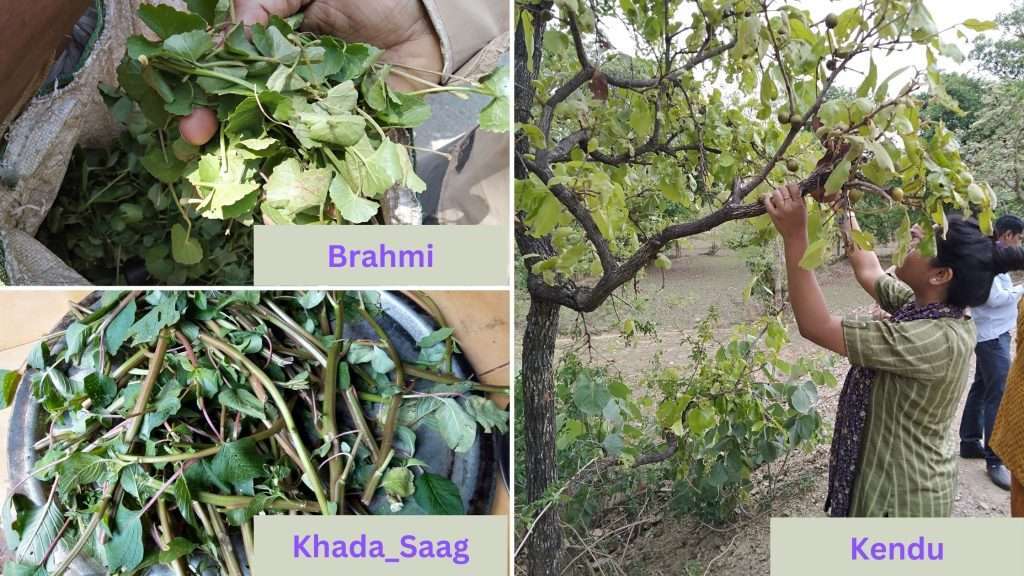
Women play a very important role in collection, conservation of local seeds and planting materials, production, propagation and management of agriculture and allied activities in the rural areas. Women are key to ensure household level food and nutrition security. There are examples of many tribal women and their associations, who have played the role of saviors of local biodiversity and practice sustainable agricultural systems and practices, suitable to the local agro-ecology. Some of the tribal women (Ms. Kamala Pujari) have now been awarded the Padmashri award for their efforts in conservation of land varieties.
The diversity of WFPs consumed by the indigenous communities has evolved over generations as a survival strategy. They relate the usage of WFPs to seasonal plant availability and the status of resources and can even predict the availability of WEPs with respect to micro-climatic changes, indicating a long-term intimate knowledge of their surroundings. Tribal women cannot imagine life without the forest that ensures their food and nutritional security.
The average daily intake of uncultivated forest food ranges between 20 per cent and 34.4 per cent of the total cooked foods consumed. These WFPs collected from the forest and farm lands also provide a crucial source of nutrition in the diets of many tribal communities. Inclusion of wild foods to a level of about 20 per cent or more in their diets alleviated signs of malnutrition.
Demand of WFP
Forest foods are in high demand, both in tribal community markets and nearby rural markets. Demand for forest produce such as honey and Amla (Phyllanthus emblica) is growing in cities which also decreased their availability for local consumption. Though this may appear an opportunity for economic empowerment of tribal communities, if not managed, over-harvesting could lead to degradation of the forests and ultimately, disappearance of these very species.
For Wild Food Plants to be preserved for posterity, the forests must be co-managed by local tribal communities along with the Forest department. The tribal community’s relationship with the forest is one of belonging rather than ownership and this needs to be understood for policy decisions.
Forest management as commons is good for sustaining forests. Tribal peoples’ access and control over forest and its sustainable use and management is the key to address issues of sustainability, food and nutrition security. Implementation of India’s landmark 2006 Forest Rights Act that offers provisions to involve communities in safeguarding forest resources and developing co-management plans is needed.
Also read:
- Leaf Plates: A Sustainable Livelihood Option for Tribals – Some Issues and Insights
- Honey Bees – Sweetening The Deal, Some Perspectives and Challenges
- Importance of Environment to Human Life
Challenges in the conservation and sustainable management of WFPs
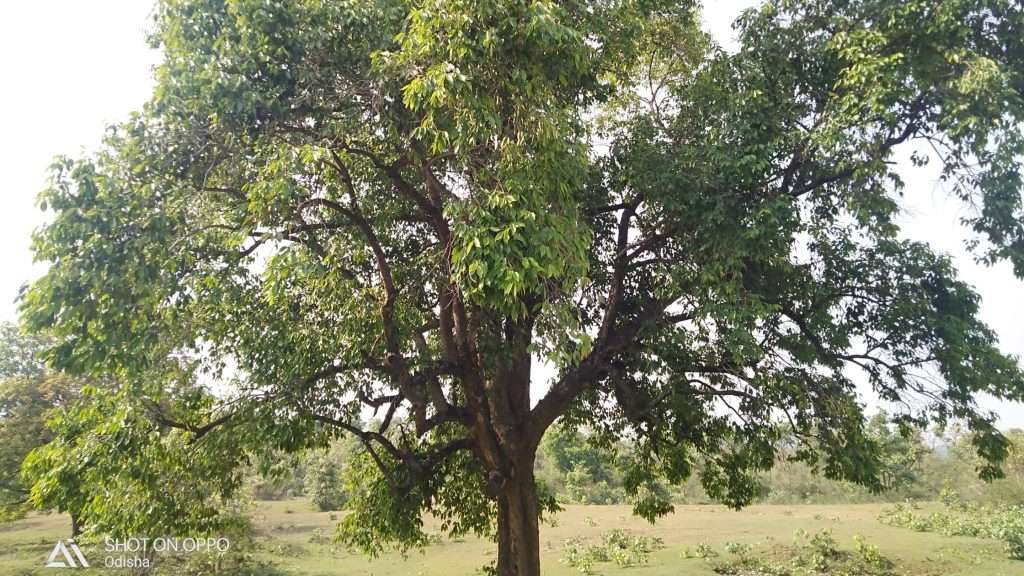
Traditional Adivasi food systems tie together ecological realities, Adivasi identity, culture, traditions and ethos, indigenous knowledge, social meanings, health, nutrition and economics.
Production practices are grounded in ecological principals like sustaining soil fertility, sustaining biodiversity, and conserving energy through practicing poly-cultural farming, with numerous crops growing in tandem.
However, in recent years these self-reliant, biodiverse agricultural practices have been under threat. The green revolution model of agriculture, in the name of modernization, has been characterized by the imposition of alien agricultural technology, ‘high-yielding’ varieties of seeds, the chemicalization of farming, and the growth of commercial mono-cultural plantations, all of which have endangered the farms and forests of Adivasi peoples.
In plant conservation programmes, priority attention should be given first to species threatened with extinction including native plants and then to plants of limited distribution in natural forests.
Some of the major challenges in conservation and sustainable management of WFPs include:
1. Lack of storage facilities
Some major challenges to exploring wild edibles for capacity building and entrepreneurship are ignorance among rural people about the medicinal and nutritional potential of wild food, lack of awareness about the latest processing techniques and a dearth of storage facilities, connectivity and marketing opportunities. As a result, most of the wild food items get wasted at source. These concerns need to be addressed and overcome for a better outcome.
2. Centralized processing
The success of marketing wild edible plants fully in rural areas depends on developing centralized procurement, storage and processing facilities, which can handle, wash, dry and grade wild-crafted plants in bulk for value addition. These facilities can also be used to process and market wild food plants and provide educational opportunities to the rural community.
In the current situation, along with well-known wild food plants, other plants like ‘Dudhi’, ‘Ghadiphool’, ‘Bans’, ‘Sahejana’, ‘Umare’, ‘Gulab’ and ‘Drabhad chhoonh’ having luxuriant growth with good food and market value nationally and internationally can also be promoted as an income-generating wild food. But these need to be sustainably harvested and successfully marketed for making them an efficient mean of livelihood option, capacity building and entrepreneurship development for the rural community.
3. Community awareness
There is still a need to sensitize local indigenous communities further on the need of preserving natural habitats and involve them in collecting of germplasm of edible wild plants and their relatives for ex-situ conservation. Disturbed places play an important role in human nutrition through provision of green vegetables, some of which may occur as invasive weeds.
Prioritizing on proper harvesting, storage, and marketing of wild foods produced seasonally in large quantities might be an important step in maximizing the nutritional benefits of local indigenous communities.
Lastly, understanding the distribution of ethno-botanical knowledge among individuals and the role of age, gender, and the level of education are important factors in conservation of wild edible plants.
Policy level suggestions
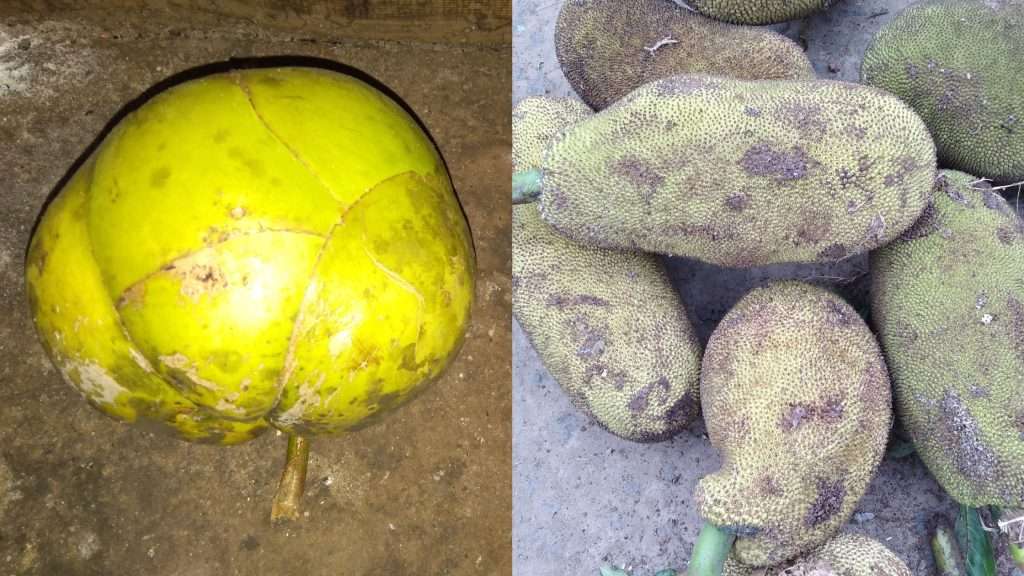
- Cultivation, Conservation and management of WFPs: Mass awareness campaigns on the cultivation, conservation and management of wild food plants and edible herbs can be beneficial to communities to ensure household level food and nutrition security. Many schools in developed countries now include a kitchen garden activity. On similar lines, children and indirectly their parents can be made aware of local herbs that can be used as a source of food.
- Awareness among women and children on WFPs and balanced daily diets: Awareness drives can be undertaken among women and children on the importance of wild food plants and their health benefits can be undertaken by development actors including the Government and civil society organizations on the local biodiversity and use of wild food plants as food and medicines.
- ICDS and Mid Day Meal (MDM) scheme to include WFPs: The Integrated Child Development Scheme (ICDS) should include provisioning of local wild foods for the pregnant and lactating mothers and children in all Anganwadis. While the MDM is neutral when it comes to serving vegetarian and non-vegetarian food, it only suggests the amount of calorific content. The Government needs to think of nutrition beyond the aspect of calorific value giving importance to other health benefits and nutrition aspects. The MDM scheme can include more local wild foods like greens, vegetables, tubers and fruits. This will enhance the nutritional value and will also have other health benefits. Fortification of food for perceived improvements in nutrition levels of children need to be avoided at all costs, which are currently being pushed by the Multi-National Companies and some political leaders, from a profit. Hot cooked meals prepared from local food grains and WFPs is always better than “fortified” food.
- Identification of WFPs and documentation of indigenous Knowledge: Local communities are knowledgeable on local biodiversity and are aware of the local wild food plants. They can contribute immensely for the identification of wild food plants and describe their associated benefits including food and nutrition value and medicinal uses in community programs and events. There is a need for systematic identification, in-situ conservation and documentation of the indigenous knowledge systems across the country, especially in the tribal areas.
- Declaration of drought when the WFPs production is affected by 50%: Adequate steps need to be undertaken for providing support for conservation, protection and management of WFPs by local communities and the Government. This has a bearing on the local communities to ensure their food and nutritional security during abnormal years and prevent distress migration.
- WFPs processing and preservation in the areas where they are produced: The Government should set up food processing units and cold storages for WFPs at the Gram Panchayat level. This will ensure better marketability and profits for local growers and ensure food stocks which can be used as a buffer during food scarce months and during natural calamities to cater to the immediate food requirements of the most vulnerable and at-risk communities. Forest communities often carry products that are not well packaged and hence not of long stability. For example, Tribal women form Koraput region sell the flour of East Indian arrowroot but they can also be trained to use them during lean times by adding other ingredients in their diet.
- Focused research and extension on WFPs: State Agricultural Universities Indian Agricultural Research Institute (IARI) and other premier food and nutrition institutes like Central Food Technological Research Institute (CFTRI), which have existed for over 50 years, have taken little or no steps on research and extension services promote and preserve the indigenous/wild foods especially from Odisha. Preservation of seasonal foods using modified preservation methods for round the year consumption may help alleviate malnutrition. For example, making wild fruit jams using local ingredients.
- Setting up of more Nutritional Rehabilitation Centres (NRCs): NRCs will reduce child mortality but will not improve the general nutritional status of children in the community. Therefore preventive and promotive efforts must be continued. Strengthening of community based mechanisms for identification, prevention and management of severe acute malnutrition is a must, in the absence of which NRCs will not be effective. Facility based approach may prevent some under 5 deaths, but will not be useful in addressing this problem in the community.
- More engagement and better coordination among Government, private sector and civil society organizations on Nutrition security: A combination of aforementioned Government, private sector and civil society activities would be beneficial to address the issue of malnourishment on a war footing. The public sector and sponsorship through those who donate online, investors, corporates, and volunteers can successfully eradicate the hunger problem, and permanently end the scourge of acute malnutrition-based infant deaths.



Really great! An excellent study and documentation. About Mahua, my idea was, it is only use for local drinks but I had no idea about its so important other uses.
Thanks dear Dutta ji